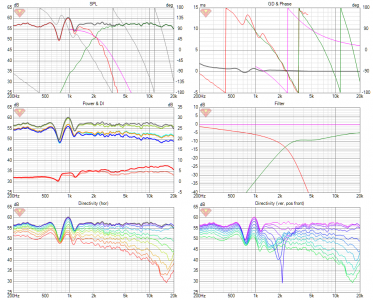So true ! Perhaps One of the key difference in mindset between a manufacturer and DIYer isNot speaker design per se, but please read this interview of Rob Watts, the designer of Chord's DACs. He uses measurements to design DACs and correlates measurements with subjective listening. The main takeaway for me is the fact that he said that seemingly inconsequential measurements/parameters have far reaching sonic repercussions. All design endeavours of audio electronics and speakers necessarily involves mathematical calculations and a deep understanding of physics. But these are starting points. These are made to reproduce music and therefore any designer would listen to his creation. When psychoacoustics is skillfully added to fine tune the design the end product is more wholesome and pleasing. So both measurements and listening are essential ingredients, IMO.
But to come to the subject, I'm assuming the subject line is a question. If it is, are the measurements needed so that they can be emulated by DIYers?
Manufacturer makes a product for a specific existing market or attempts to carve/create one. so a lot of Psychoacoustics, market preferences and branding needs to be layered over a product. its design/engineering/specs are assumed to be hygiene factors and without it may be difficult to survive in the long run. Specs being published could be dependent on its competitive differentiation which they may choose to display or hide.
A DIYer, on the other hand , I would assume, usually makes a product driven by ones own objective of sound.while may hope for a larger acceptance in a market. Here perhaps measurements might be the key way to getting sales if the Diyer is inclined to do so.
Last edited:


